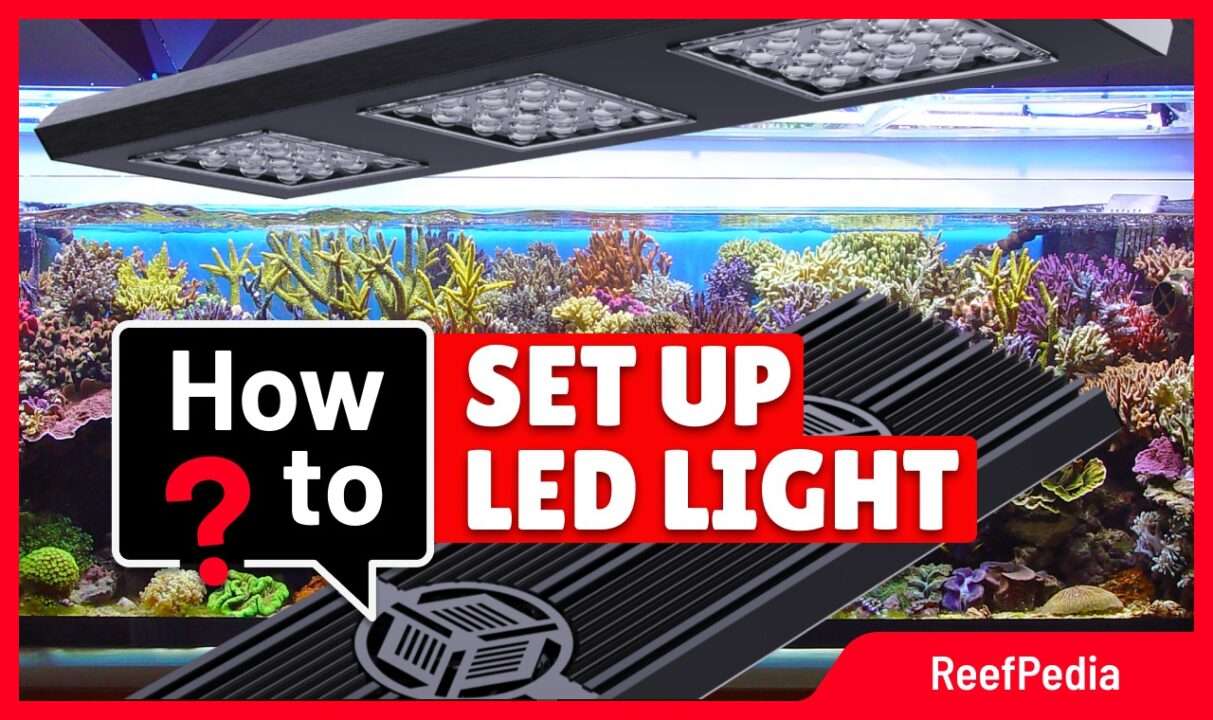Table of Contents
Proper LED lamp setup – Introduction
Proper LED Lamp Setup is undoubtedly the most interesting article in the entire series on lighting that I have written recently. In this material, I will explain my lamp setting step by step in a practical way. Additionally, I will justify why we set the lamp this way rather than another. Will my setting be the best for you? I assume it will work well in some tanks, but probably not in others. Therefore, let’s first go through this case study, and then consider if these settings are right for you.
It is also equally important to familiarize yourself with the article titled “Light in the marine aquarium – you need to know this!“
Corals and proper LED lamp setting
As I mentioned in previous articles, corals have adaptive abilities and can adjust to various lighting conditions. Research and observations indicate that corals most easily adapt to the blue and violet spectrum, ranging from 400-495 nm. Personally, I also set my LED lamp to the full spectrum for several hours a day.
Rapid coral growth method
During research conducted at Crazy Coral, we developed a method for rapid coral growth under artificial conditions. We compared corals kept under only “blue” spectrum light and those under a full spectrum (without changing ranges throughout the day). The coral kept under blue light displayed more vibrant colors. Meanwhile, the coral under the full spectrum had thicker and more stable branches. Furthermore, for the corals kept under blue light, it seemed that their branches were orienting towards the light. On the other hand, those under the full spectrum appeared more nourished.
To illustrate the results, below is a comparative photo of two corals from this study. On the left is the coral maintained under the “blue spectrum,” while on the right is the coral under the full spectrum.
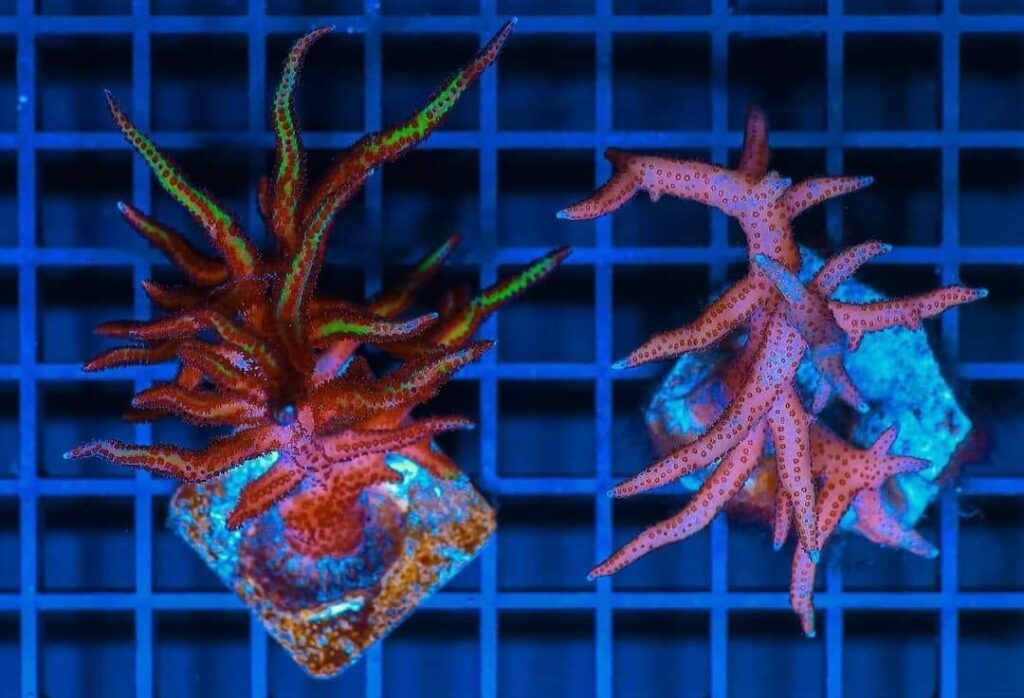
Regarding the proper LED lamp setting, I personally configure the lamp to predominantly emit light from the blue spectrum. The full spectrum is only made available for a short period of time. Generally speaking, I consider this to be a fair compromise. We provide more energy with the full spectrum, allowing the coral to realize its photosynthesis potential. At the same time, we deliver a large amount of valuable blue light, which enhances the coral’s color and visual appeal.
 TIP: If we want to achieve better results with the blue spectrum compared to the full spectrum, we need to provide the right amount of PAR power. Therefore, it is best if the amount of PAR matches the specific needs of the coral.
TIP: If we want to achieve better results with the blue spectrum compared to the full spectrum, we need to provide the right amount of PAR power. Therefore, it is best if the amount of PAR matches the specific needs of the coral.
Proper LED lamp setting
Below are three screenshots from the Smart Reef lamp management panel, where the method of setting the lamp is discussed.
In the first image, you can see my lamp settings. There, I have highlighted three key lighting points.
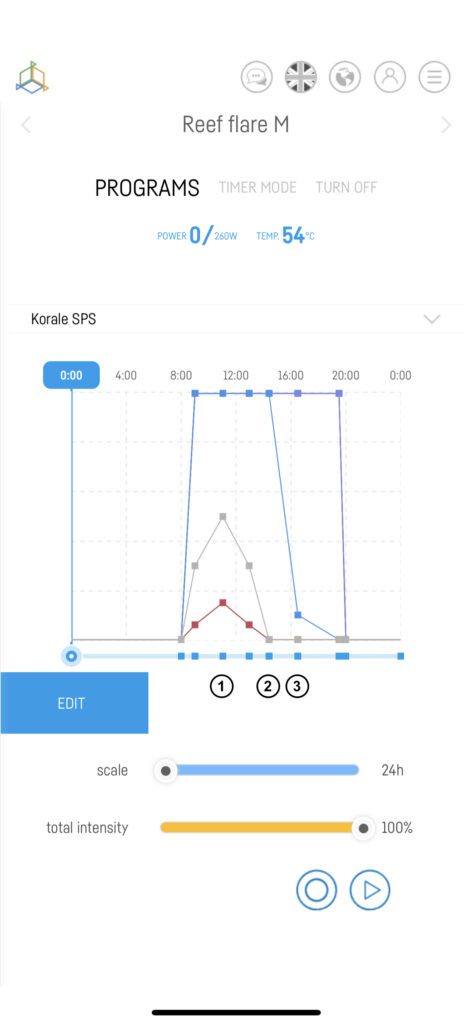

- The first stage is full-spectrum light, ranging from 400-700 nm.
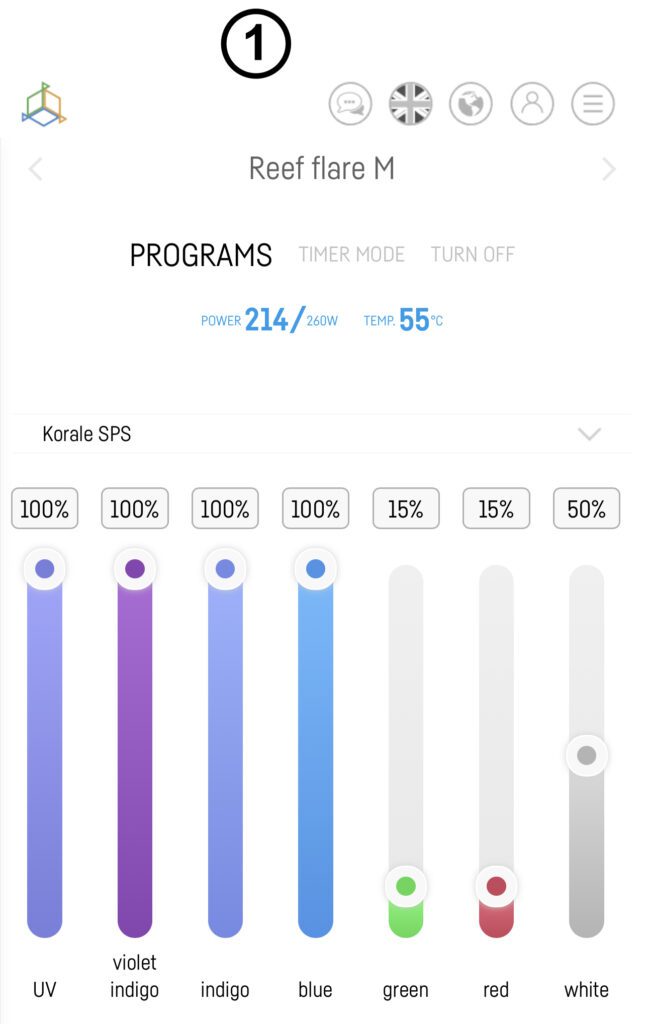

- Then we move to the “blue” spectrum, covering the range of 400-470 nm.
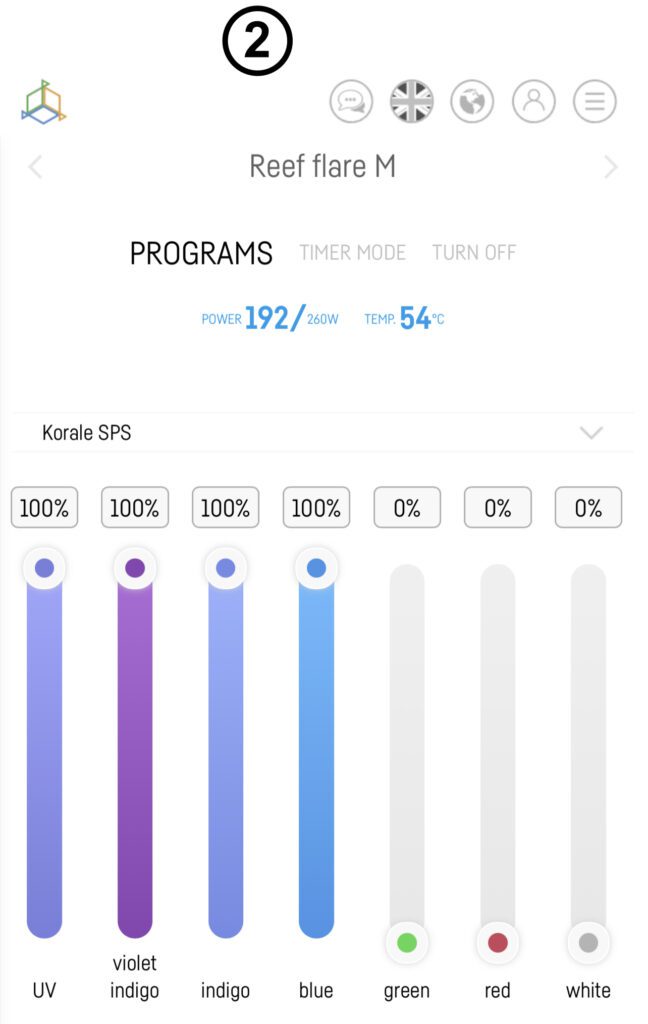

- In the final stage, corals reach their photosynthesis potential, so I provide less PAR power. Corals still receive energy from photosynthesis. However, since they have already reached their photosynthesis potential, they do not need to receive a large amount of PAR. As a result, they can clean themselves very efficiently even with less circulation. Moreover, corals look the most beautiful to my eyes at this stage. At this point, I mainly light in the 400-450 nm range, with a small contribution from the 470 nm range. This is my favorite setting in terms of the appearance of the corals.


Summarizing the topic of “Proper LED Lamp Setting,” my philosophy is based on several fundamental principles.
Firstly, providing a large amount of energy with the full spectrum (1) so that corals can nourish themselves through effective photosynthesis.
Secondly, providing just the “blue” spectrum so that corals can feed more slowly, yet with a valuable spectrum of light that is easier for them to function in (2).
Finally, reducing PAR to allow corals to continue feeding but also to clean and regenerate themselves after intense lighting (3).



Summary
In conclusion, is this my final setup? I don’t think so. I will definitely continue experimenting. Is this setup ideal for everyone? I doubt it. My goal was not to create the perfect lamp setting for everyone, but to show how to experiment with lamp settings. All this to tailor it to the specific requirements of corals. Finally, my request and advice: before you start experimenting with lamp settings, read the following articles about light. These will help you understand the aspect of light from a broader perspective. Moreover, my request is motivated by concern for your aquarium and corals.
Articles about light that you should read:


About the author


Marek Protasewicz
Reefkeeping has been my passion for over 10 years now. I love learning. The hobby has taught me many valuable lessons, patience being the best example. Combining work and passion is my path. I run Crazy Coral, a marine aquarium shop, for a number of years. Building this business from the scratch I learnt from my own mistakes at a heavy cost.
Later I managed a project aimed at development of methods for quick growth of Corals in non-natural conditions. The project was carried out by Get Sales, Poland. Presently, I am responsible for distribution strategy at Reef Factory, of which I am a co-founder. The company produces smart devices for marine aquaristics. The last projects I have been involved in are Social Reef and ReefPedia.

